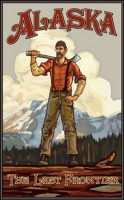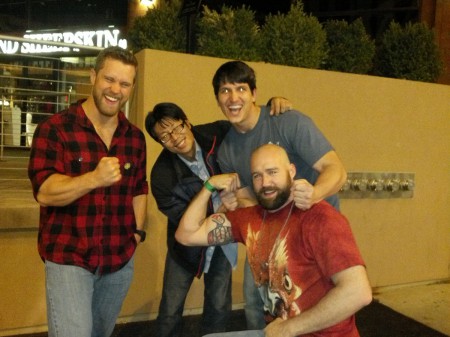 PR Friday allows all lifters, great or small, to discuss their triumphs and failures with like-minded folks. Get involved in the comments.
PR Friday allows all lifters, great or small, to discuss their triumphs and failures with like-minded folks. Get involved in the comments.
Last Week’s Challenge asked you to eat as many animals as you can in a meal or day.
Next Week’s Challenge: Do rows at the end of each training day. See what happens. Read this post by Dr. Hartman for a refresher on why.
Week In Review: Monday’s female post focused on getting your lady friends into the gym any way you can because it provides a gateway to health or interest in lifting. Tuesday introduced the second mission of The Revolution; take flannel back from the hipsters. Yesterday I showed you how I have run into plenty of Brent look-a-likes, but be sure to check out Brent’s new shirts.
Q&A:
Joel, from this Q&A asks:
Quick question: I have been experiencing achy elbows lately, especially my right one. I’m not doing anything different that I am aware of, but mobbing and stretching them seems to do nothing. I’m guessing it is probably the beginnings of tendinitis and it may stem from grip width during low-bar squatting, but it never ever bothers me until I’m outside of the gym doing random stuff. The most painful thing is gripping a full glass with my (right) arm fully extended and the pain gets worse if I were to dump the glass out to the right. What would you recommend I do to diagnose/fix this issue and prevent it from happening in the future? I know a recent vid of my squat would probably help immensely, but I never film myself since I train foreveralone.jpg in a globo…so I will work on getting one asap.
I’ve also been hitting a wall with the Texas Method, which I’ve been running strictly for 4 months now after buying your book in June – No real PRs in, like, 3 weeks. I’ve been feeling good, mobbing, and eating like a horse (at least getting 1g protein/1lb BW) but just not feeling any stronger. Is it time to get advanced with my TM template (I’m hesitant to do this since I haven’t been on it that long), or just change up some of the set/rep schemes for now? Some numbers:
5’5” – 175lb – 33y.o.
VD SQ – 295x5x5
OHP – 120x5x5
BP – 185x5x5ID SQ – 365×5
OHP – 140×5
BP – 205×5
DL – 395×3I can’t say it enough, but thank you so much for all of your help thus far, Justin – You’re advice has proved invaluable and I can’t wait to see how much better and more useful in general you can make these aging and broken human beings – – Keep it up! (sorry for the novel, btw)
-Joel (aka. blister)
Dear Joel,
Good to hear that your wife is doing better (he explained this in the e-mail, but I omitted it for space). Once you guys get back from the vacation, get on a regular exercise regime — start with at least 2x/wk with other days for walking (have dogs?).
Regarding your elbow, I’d first assume that your squat grip is what is irritating it. This is actually quite common. You can see some discussion on this from Q&A – 27 and Q&A – 28 (just ctrl+F “grip”). Improve shoulder mobility and grip position on the squat and do some soft tissue massage up and down stream from the area of injury. The former will fix the underlying problem while the latter can help treat the issue itself.
Regarding your lack of progress on TM, your volume squat work is only about 80% of your intensity squat work, so you can actually stand to increase the volume a bit more. I’d say stick with the 5×5 and increase the weight a bit and see what happens on that particular lift. As for the other lifts, there isn’t a whole lot of info here to go on, but your bench volume is 90% of your intensity bench work, and that is a bit high. Either reduce it down to a 3×5 on the Volume Day or reduce the weight overall. Your presses are also a bit weak, and in this type of situation I usually like to recommend weighted pull-ups once or twice a week and later adding rows into the mix as well. Filling out the upper body strength and musculature helps drive the presses, but also be sure to check out this press video (the elbow positioning is important while benching too, these videos may help: one and two):
Lastly, you need to eat more protein than just 1g per pound of body weight. Check out this “PROTEIN” post, but I would add 50g on top of what you currently get. I suspect that you’ll start making progress after a week straight of the additional 50g (the new intake needs to be chronic, not a “sometimes” thing).
More in a bit.












